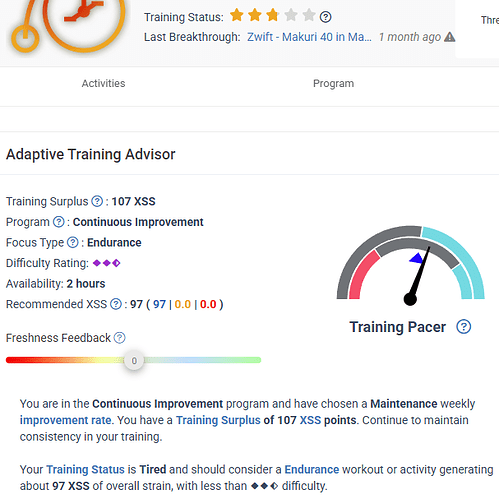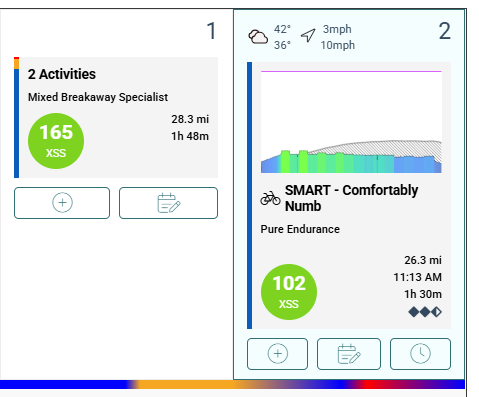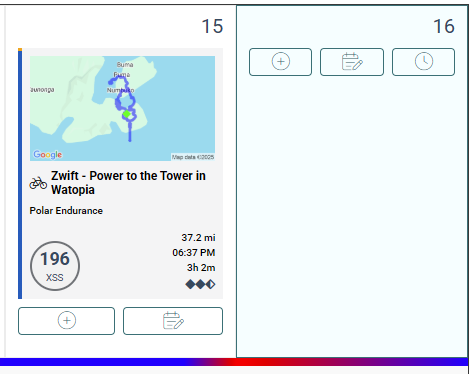Hello!
Can someone help me out with this… I am trying Xert once again and observing strange behavior - the training status reported by different elements is different:
I do not have any training planned and planner is somewhere between red and yellow - and was changing my status from red/very tired to yellow/tired right in front of my eyes.
But Training pacer shows that I am fresh???
Also - why would XATA change Freshness Feedback by itself? I set it to 0 (or less0 and next day it indicates +2 - I was under impression that this is MY control, not application’s…
Moreover - Training Pacer shows that I am ahead of plan and since I was very tired 20 minutes ago, the recommendation was to take some rest… And all of a sudden it wants me to do 97 XSS (in addition to my surplus)? According to some other metrics, it may easily put me into overtraining territory…
Last time I tried Xert a year ago and it behaved similar or worse. Now, with updates to XATA and Zwift integration, I was hoping that it would finally make sense. I paid for another month of trial, it ingested all of my training and I set up my program - just maintain my current fitness level. I also asked for maximum of 7 hours of training per week…
But it looks like XATA has its own ideas… It overestimated my FTP (that’s known issue and can be easily corrected), but it started to load my training with about twice as much I was doing before… This week it wants me to train for more than 10 hours already even with the limit applied…
How do I take control of the recommendations? If XATA can’t achieve the plan I configured, it should tell me about so I can adjust. I was hoping that it would balance my training load across a week providing good workouts and enough recovery time… But even with increased recovery demand in my profile XATA recommendations seems to try and seriously overload my training… Which is surprising - if I want to MAINTAIN my fitness, the load should remain constant, however XATA is trying to ramp it up regardless…
Would appreciate any help here. I read most of the documentation, but some settings are NOT documented at all - for example, there is no information on how “Max Weekly Hours” works.
Setting for “Recovery Demands” goes into several links conflating things with Freshness feedback and do not have NUMBER associated with it - so if I change slider today, there is no way for me to mark the value I have set for tracking and future adjustment…
Would appreciate if someone clarifies why:
- my training status is indicated differently in Training Pacer vs. Recommendation and Planner
- freshness feedback changes by itself
- how “Max Weekly Hours” works
- why “Recovery Demands” slider do not have any values to it






